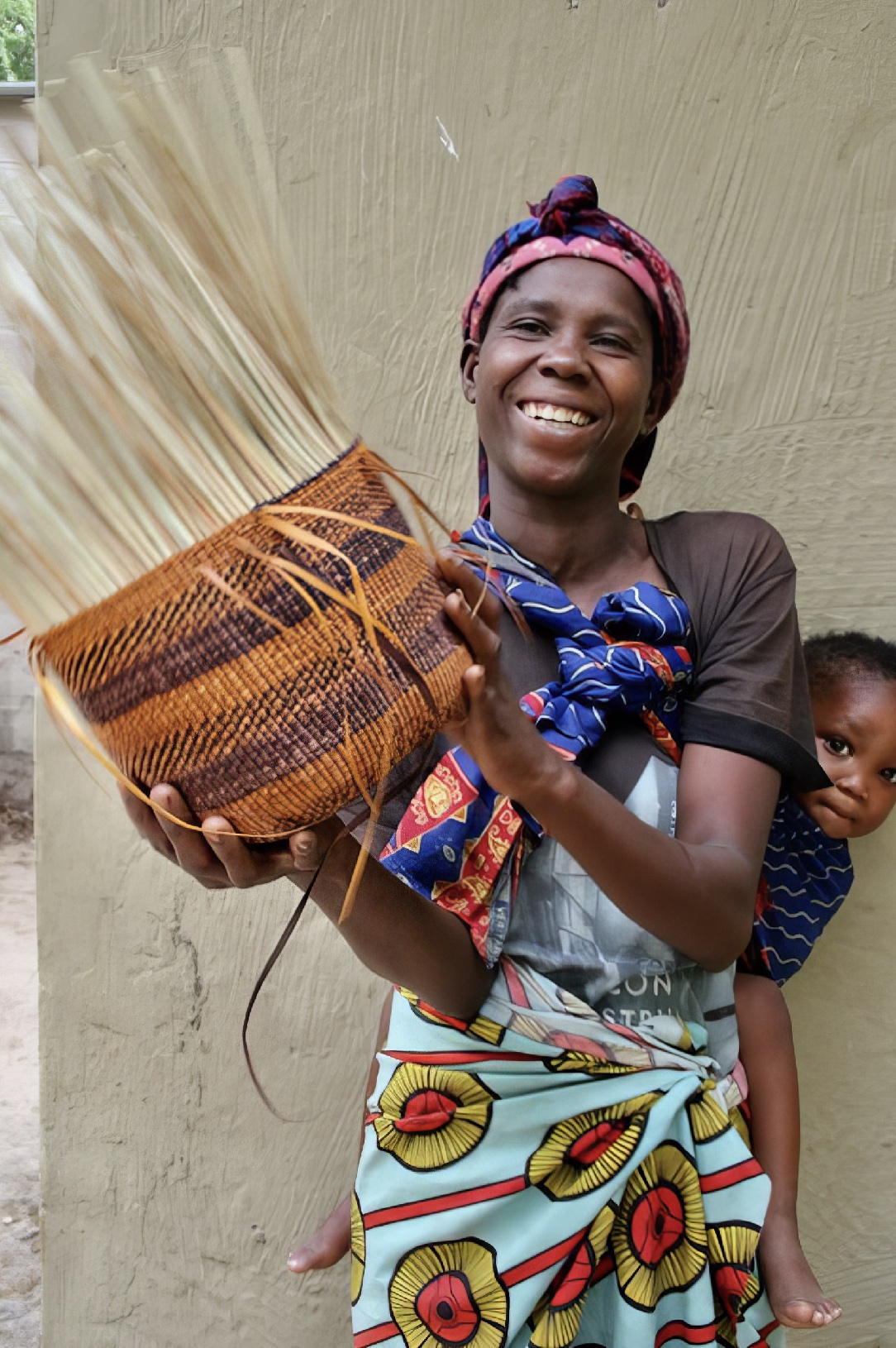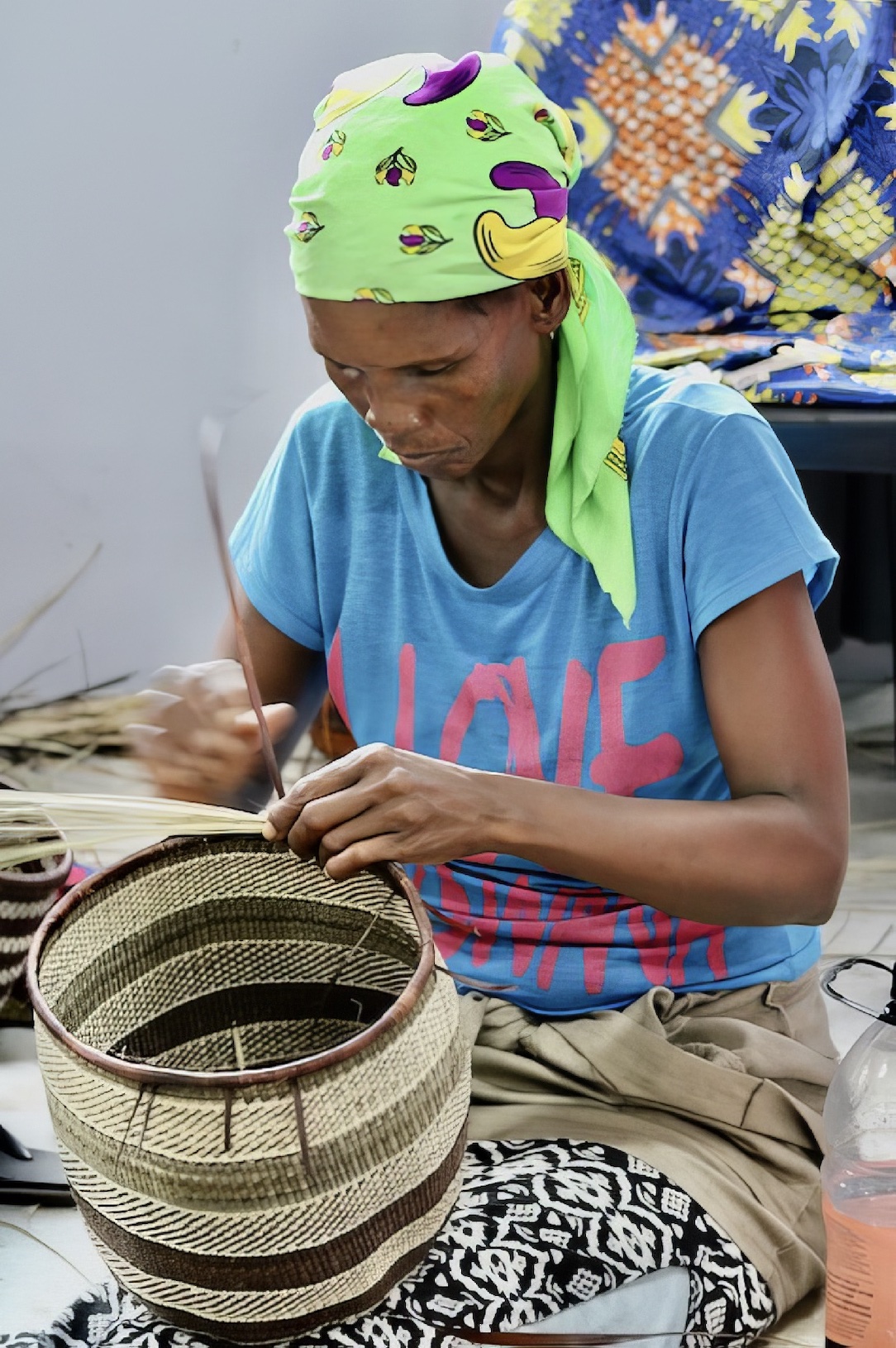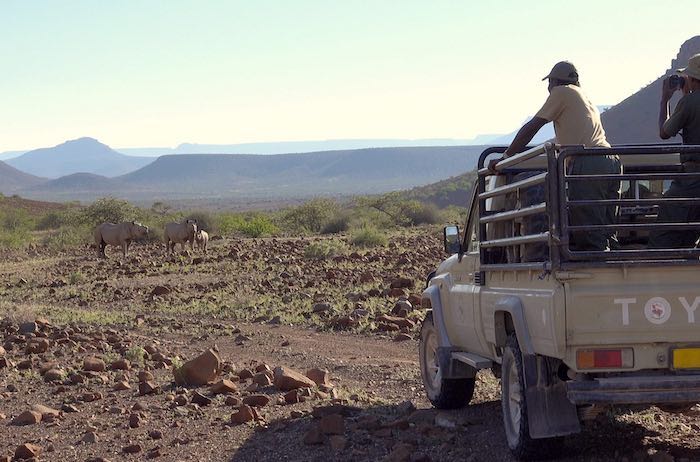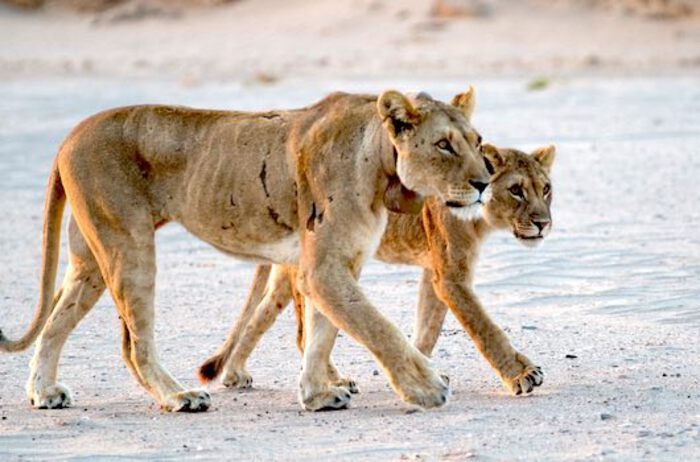
Weaving resilience
San women are adapting their livelihoods to climate change
8th November 2023
8th November 2023
Namibia is famous for its desert landscapes. Visitors may therefore be surprised when they encounter the lush green Zambezi Region, cradled in the confluence of the Kwando, Zambezi and Chobe rivers. This relatively wet part of the country is not immune to climate change, however. The negative effect of this global phenomenon is felt most keenly by the local communities who rely on natural resources for income and sustenance.
The Khwe and !Xun people are indigenous San communities who live in the 6,274km2 Bwabwata National Park, which straddles the Zambezi and Kavango East regions. When the park was established, the resident San communities retained their right to remain on the land, but their traditional lifestyle of hunting and gathering was restricted. While the Kyaramacan Association, formed by the community, allows them to co-manage their natural resources with the park authority, community members must abide by hunting regulations and park rules.
Today, most families in Bwabwata rely on subsistence farming and government aid with limited access to employment and other income-generating activities. Kyaramacan provides employment for 64 people and generates benefits through hunting concessions in the park, but other forms of earning income are scarce. Climate change leading to crop failure, reduced forage for livestock, a decrease in wild fruits and limited water availability, is adding to these social and economic challenges.
To understand the magnitude of these impacts on the Khwe community, WWF Namibia started the Climate Crowd initiative, a bottom-up, community-driven initiative that helps people and nature thrive in a changing climate. Its aim is to work with communities and local non-governmental organisations (NGOs) to collect and analyse data on local climate impacts. The results are presented to the relevant communities. Based on this shared information, we work together to develop, fund and implement solutions relating to water security, climate-smart agriculture, alternative resilient livelihoods, protecting and restoring forests and adapting to a changing climate.
Our team conducted 43 interviews in six villages in the park to explore how the respondents’ livelihoods have been affected by the weather and climate. Most respondents (77%) reported decreased crop production and less wild fruit due to decreasing rainfall, hotter temperatures, prolonged droughts and population growth straining existing resources. They struggle with hunger, poverty, food insecurity and loss of income as yields and the availability of wild fruit decline.
About one third (35%) of respondents reported a decline in the availability of firewood due to population increase, decreased rainfall, prolonged drought and changes in wind patterns. A similar number (33%) also noted that less pasture is available, resulting in poor livestock health. These changes make subsistence farming and other activities that rely on natural resources increasingly precarious. As a result, about 30% of respondents have turned to other ways of earning an income. Selling crafts and honey, and building traditional homes were among the ways of generating cash to pay for food and other necessities. Families also rely on child social grants.
Access to water is a significant issue for the Khwe. Several villages have to do without water for days during prolonged overcast conditions that reduce the efficiency of solar pumps which supply community waterpoints. Natural streams and ponds no longer hold as much water as they once did, increasing the reliance on pumped water. Two villages lack access to potable water, as the water pumped from boreholes has an extremely high iron content. People in these villages rely on rain for freshwater or they have to fetch water from neighbouring villages during the dry season. This is particularly difficult for the elderly. They explained that drinking the contaminated water from their village boreholes causes diarrhoea and other waterborne diseases, and stains their teeth and clothing.
Listening to community members as they describe the realities of their lives is critical, but it is only the first step. The next step is to work towards solutions that will help make a difference. Omba Arts Trust has been marketing Khwe baskets for many years, primarily from Masambo village in Bwabwata where high-quality products are produced. However, due to anti-poaching teams limiting the weavers’ access to palm trees, basket production ceased for a few years. Now the anti-poaching team is working with the Kyramacan Association to help the weavers get their weaving materials.



Omba Arts, IRDNC (Integrated Rural Development and Nature Conservation) and the Kyaramacan Association reached an informal agreement in November 2021 whereby Omba purchases baskets that are produced by the communities with support from the other two organisations. In the past, we used to weave baskets and keep them for ourselves but now we have started selling them to survive,
one of the weavers said.
Basket weaving is a traditional craft that has proven to be resilient over time and could therefore reduce the impacts of climate change. WWF Namibia, through the Climate Crowd project, provided funding for Omba Arts to conduct a nine-day basket-weaving training workshop in December 2022. Sixteen women from three villages in Bwabwata National Park (Kachenge, Tonxei and Omega 3, which was a good representation of the Khwe community) participated in the workshop.
Participants were divided into three groups – older weavers (including those with impaired eyesight), inexperienced weavers and experienced weavers who wanted to experiment with new shapes and designs – to ensure that everyone could work at their own level. The women learned the warp and weft technique and created both traditional and new styles of baskets. Every weaver completed at least one basket, while some completed a second one or started working on it.
Beyond the artistic and practical aspects of weaving, the workshop addressed marketing, pricing and quality assessment. The women thus gained self-confidence and hope for financial sustainability in the future. Their products, woven with palm leaves and coloured with forest plant dyes, reflect their surroundings and culture. All the materials used in making the baskets are collected from the nearby forest. Basket weaving provides a long-term sustainable source of income which is eco-friendly and will help make the community more resilient to the changes in weather and climate that affect other livelihood options.
The partnership between WWF, the Omba Arts Trust and the Khwe communities has also facilitated market access, turning local creativity into a global commodity. For a start, all baskets that were produced in the workshop were purchased right away. In future, WWF-US will offer baskets woven by the Khwe women in their online gift centre and holiday gift catalogue. This illustrates WWF’s role in connecting people, who live and work in critical conservation areas, with support from people a world away.
The story of Khwe women weaving baskets isn't just about craft: it is about embracing change with innovation. It is about nurturing traditions while adapting to the demands of a changing world. As the palm leaves intertwine, so do the lives of the Khwe women, bound by the threads of sustainability, empowerment and the future that they are weaving.
To see other articles by Siphiwe Lutibezi go to her Conservation Namibia author page.
For articles on similar topics, please click one of the following options:
If you enjoyed this article, then you might also like:









